Opening a fast-food restaurant can be an extremely rewarding yet challenging undertaking.
With careful planning and preparation, your dream of owning this type of business can become a reality.
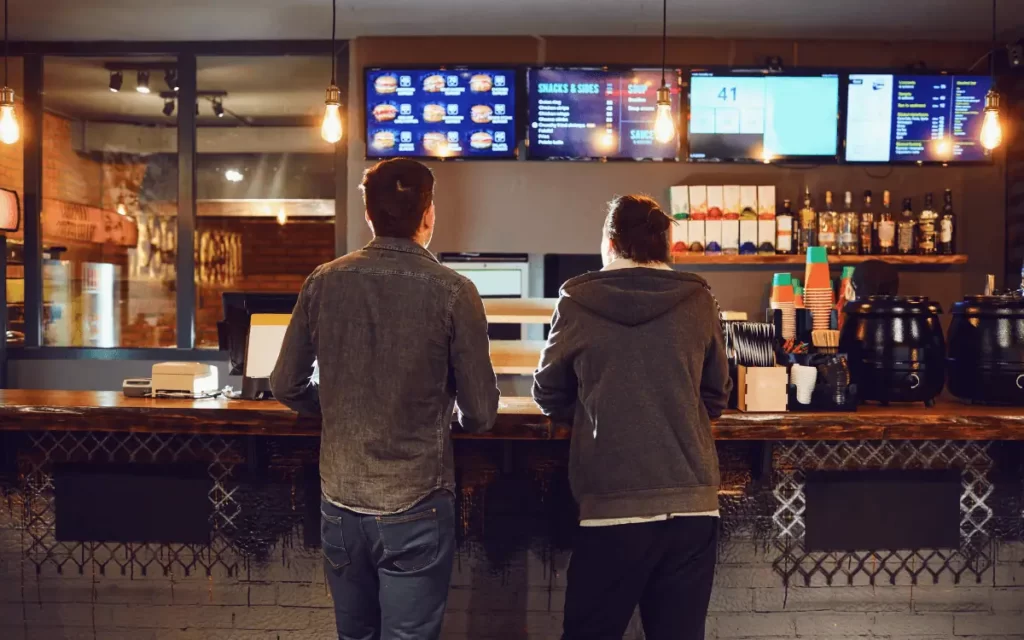
This in-depth guide provides aspiring restaurant owners with expert tips, tools, and real-world examples for developing a successful fast-food business plan.
Whether you’re opening your first restaurant or expanding to a new location, this guide will lead you through the key elements required in your plan to confidently launch and run a profitable eatery.
Key Sections of a Fast Food Restaurant Business Plan
A comprehensive business plan is crucial for opening a fast-food restaurant. Here are the main sections to include:
Executive Summary
The executive summary briefly outlines your business goals and how you plan to achieve them. It’s often written last, as a high-level overview of your plan.
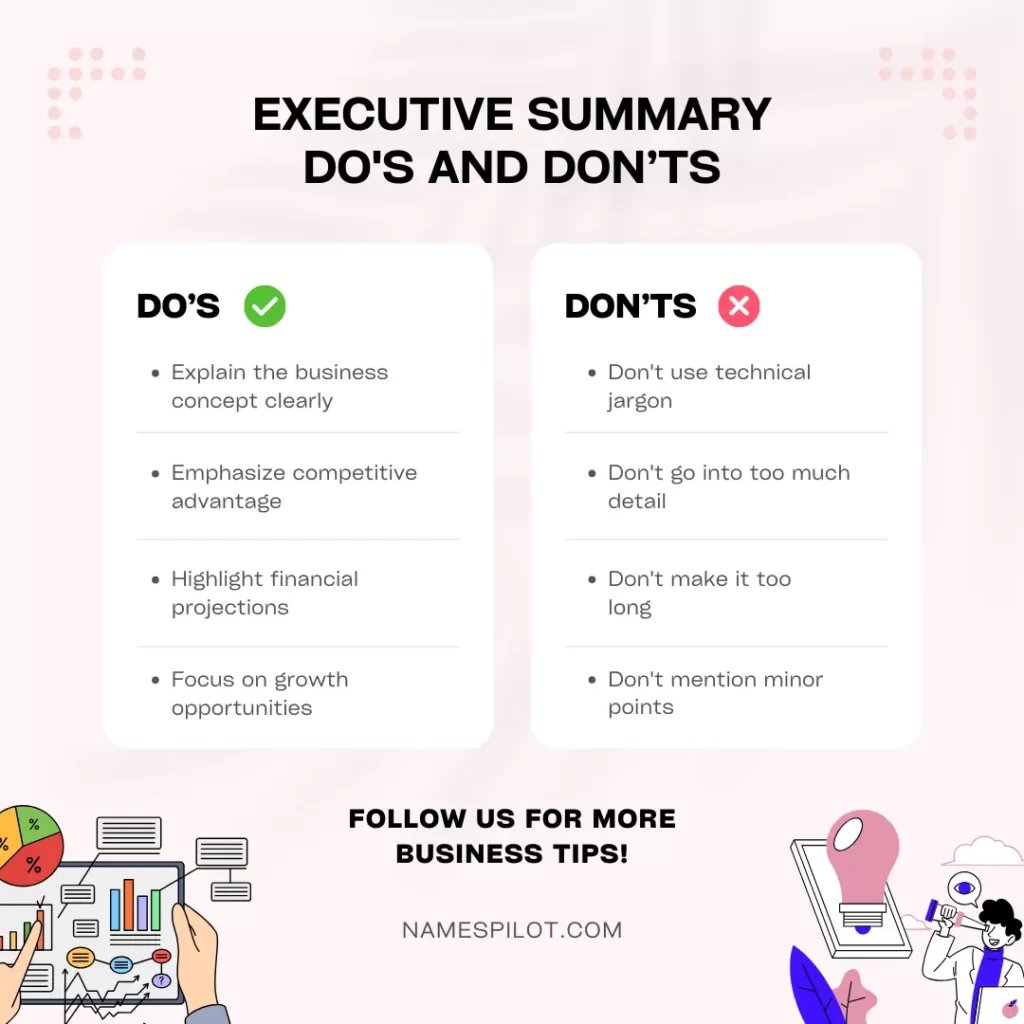
Include your restaurant concept, competitive advantages, financial projections, ownership structure, and funding needs. Limit this to 1-2 pages.
For example:
“This restaurant will be called “Burger Shack” and will serve gourmet burgers, fries, and milkshakes. The restaurant will be located in downtown San Francisco and will have a fun, retro vibe.
Burger Shack’s competitive advantage is using high-quality ingredients like grass-fed beef, hand-cut fries, and real ice cream. Based on market research, Burger Shack is projected to generate $1.2 million in sales and $300k in profit in Year 1.
The business will be structured as an LLC with two equal partners, Sarah Johnson and Michael Smith, who are contributing $100k each in start-up capital. An additional $200k business loan has been secured.”
Company Description
Describe your company’s mission, vision, and values. Outline your legal business structure and ownership details.
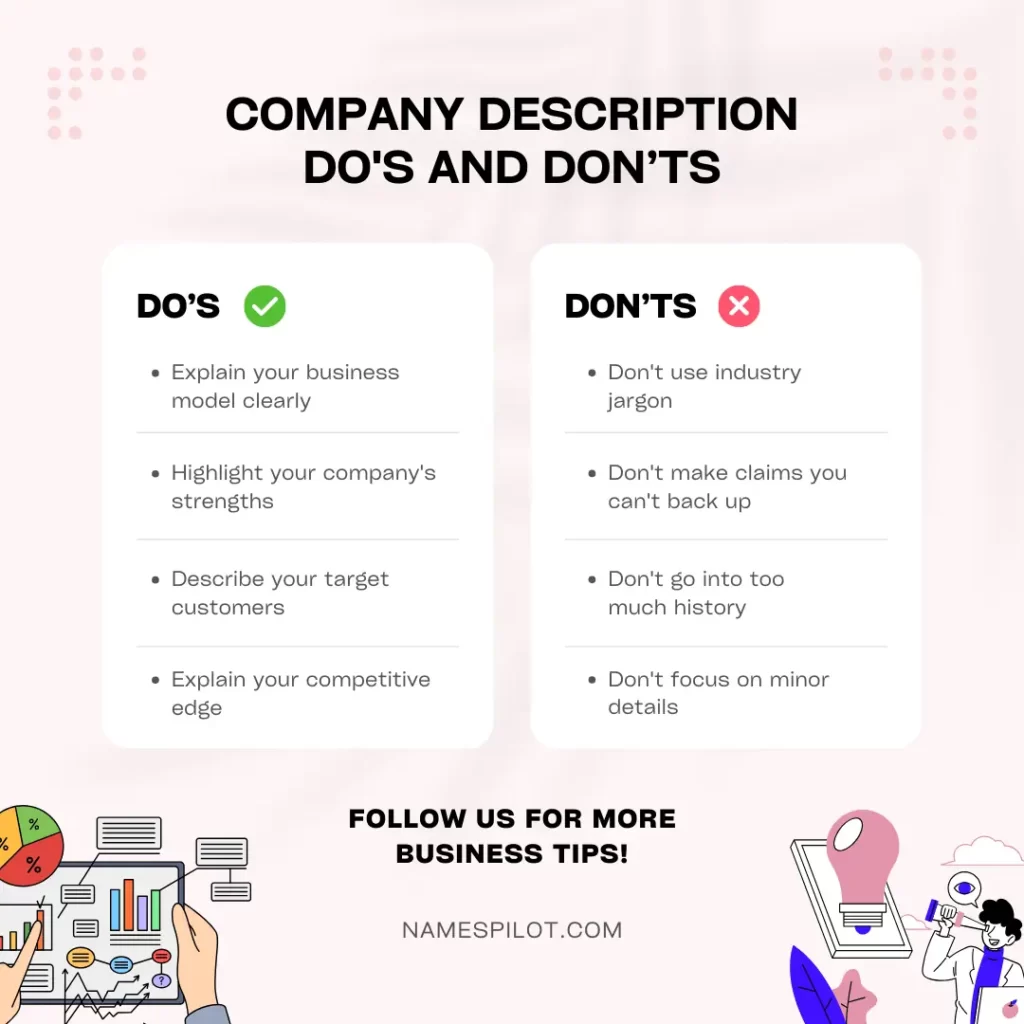
Give a brief history of the company if you’re an existing establishment. Specify your restaurant’s location and facilities.
For example:
“Burger Shack is a limited liability company co-owned by Sarah Johnson and Michael Smith. Sarah has 10 years of experience managing popular San Francisco restaurants like Roxy’s Diner.
Michael is an experienced entrepreneur who operates a successful food truck. Burger Shack will be located at 123 Main Street, which is a high-foot-traffic area.
The 2,000 sq ft restaurant will feature a fun 1950s-inspired interior with jukeboxes at each table. The large kitchen will allow for specialized prep stations for fries, milkshakes, etc.”
Products and Services
Detail the specific food and beverages you’ll offer. Describe how they fulfill customer needs and stand out from competitors.
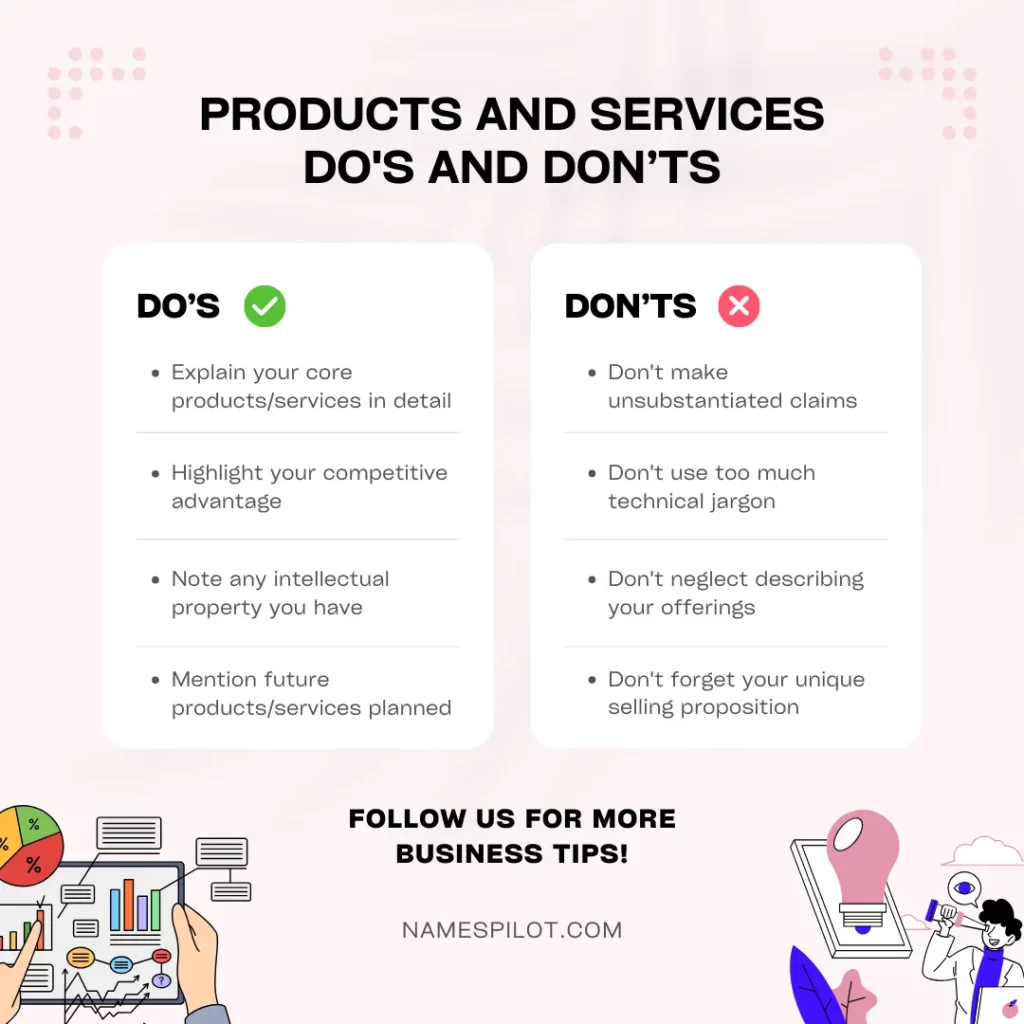
Outline your plans for sourcing ingredients and food prep methods. Share sample menus and prices. Discuss complementary services like catering or delivery.
For example:
“The menu will consist of 5 signature gourmet burgers like the “BBQ Bacon Burger” with tangy BBQ sauce, bacon, cheddar, and onion rings.
Sides will include hand-cut fries, sweet potato fries, and garlic parmesan fries. There will be 10 milkshake flavors made with real ice cream, such as cookies & cream and mint chips.
Burger Shack will source high-quality ingredients from local suppliers like grass-fed beef patties, organic buns, and seasonal produce.”
Market Analysis
Research your target market and ideal customers. Analyze competitors and your competitive advantage.
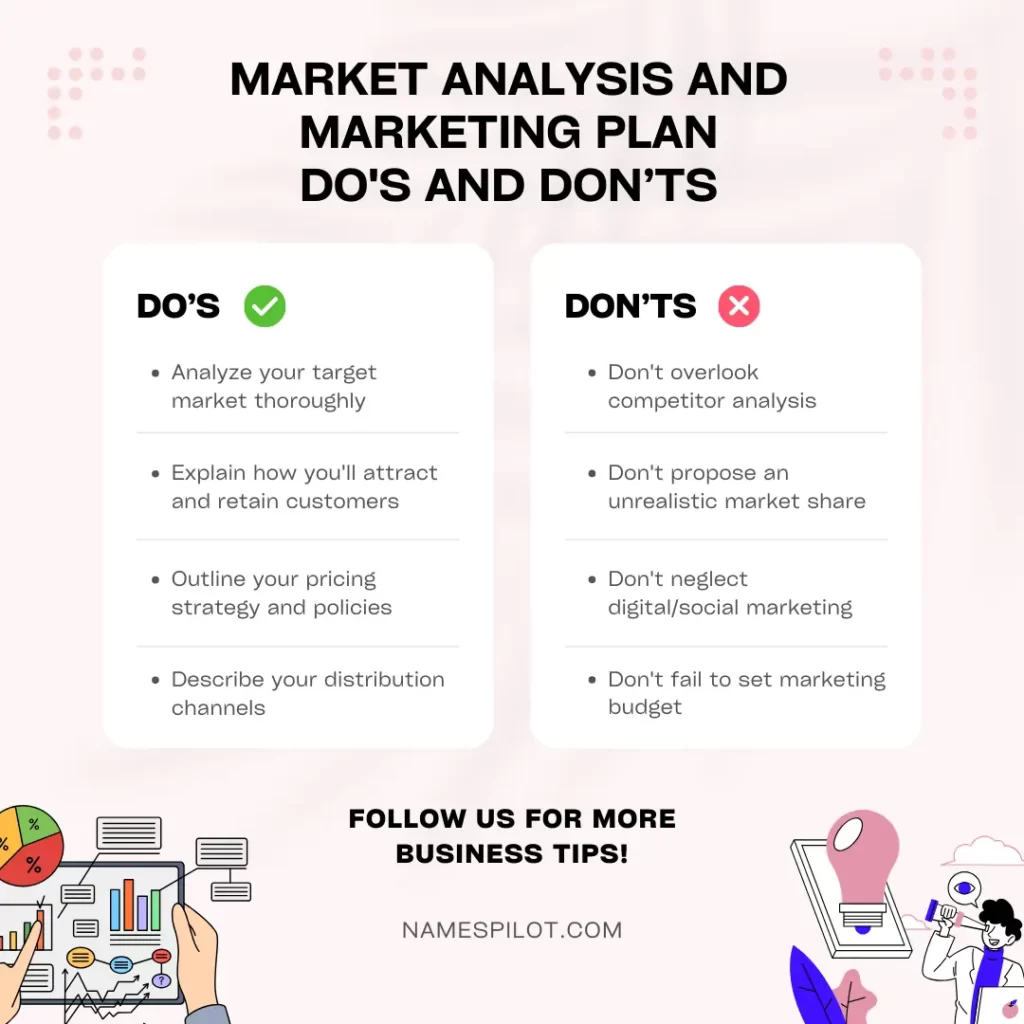
Assess the overall fast food industry and trends impacting it. This helps demonstrate a need for your concept.
“The growing trend towards premium fast casual dining is here to stay. Consumers are increasingly willing to pay more for higher-quality ingredients and a better overall experience. We foresee the gourmet burger segment growing steadily over the next 3-5 years,” says Sara Hanson, Lead Food Industry Analyst at MarketResearch.com.
For example:
“The gourmet burger industry grew by 15% last year as consumers seek premium fast-casual options. The main competitors in the area are Shake Shack and Premium Burger Company.
Burger Shack will differentiate itself with its retro theme, localized ingredients, and craft milkshakes. The target market is professionals aged 25-40 who want a higher quality quick meal.
Market research shows this demographic spends an average of $12 per lunch visit 2-3 times per week.”
Marketing Plan
How will you promote your restaurant and attract customers?
Describe your branding strategy, website, social media, PR, print advertising, and other marketing tactics.

Outline any planned grand opening events. Share partnerships or sponsorships.
“Social media and digital marketing are extremely effective ways to reach your target customers in the restaurant industry. Run campaigns to showcase your food, brand, and ambiance to drive awareness and sales,” recommends John Smith, Founder of Restaurant Media Experts.
For example:
“A grand opening event will feature specials and giveaways. We’ll partner with local radio stations for contests.
An Instagram account will showcase our food and brand. We’ll run social media ads targeted to our geography and demographics. Local flyers and posters will be distributed.
The website will allow online ordering for pickup. We’ll also run deals on Groupon and restaurant coupon sites.”
Operations Plan
Explain the daily operations involved in running your fast-food restaurant.
Share details on inventory management, food prep schedules, customer service protocols, safety procedures, and staff training. Outline compliance with legal regulations.
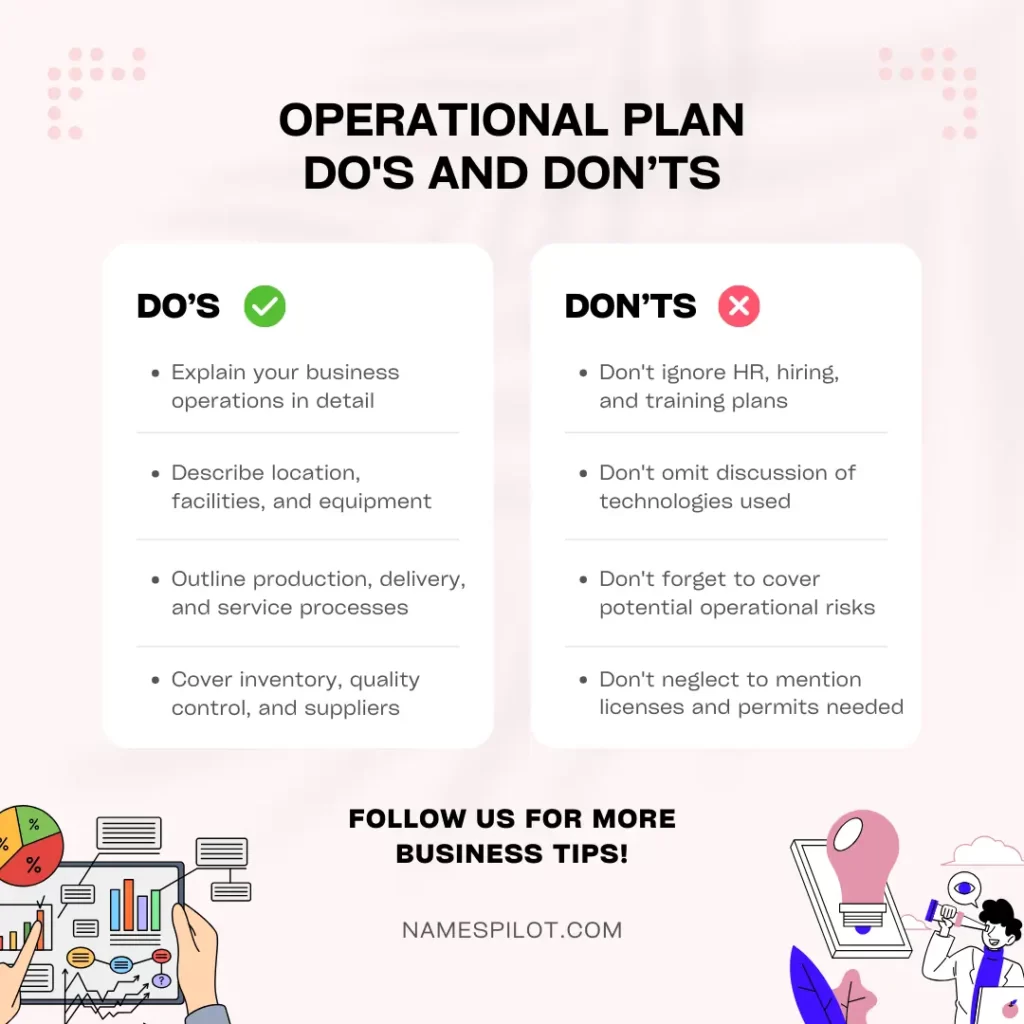
For example:
“The restaurant will be open from 11 am to 11 pm daily. Inventory levels will be tracked digitally to plan reorders.
Beef patties and fries will be prepped each morning while milkshakes and toppings will be made to order. A staff of 2 cooks and 3 servers will provide quick, friendly service.
Employees will go through a 2-week training program on kitchen safety, customer service protocols, and order management system.”
Financial Plan
Include projected startup costs and operating expenses. Provide expected sales forecasts and revenue streams.
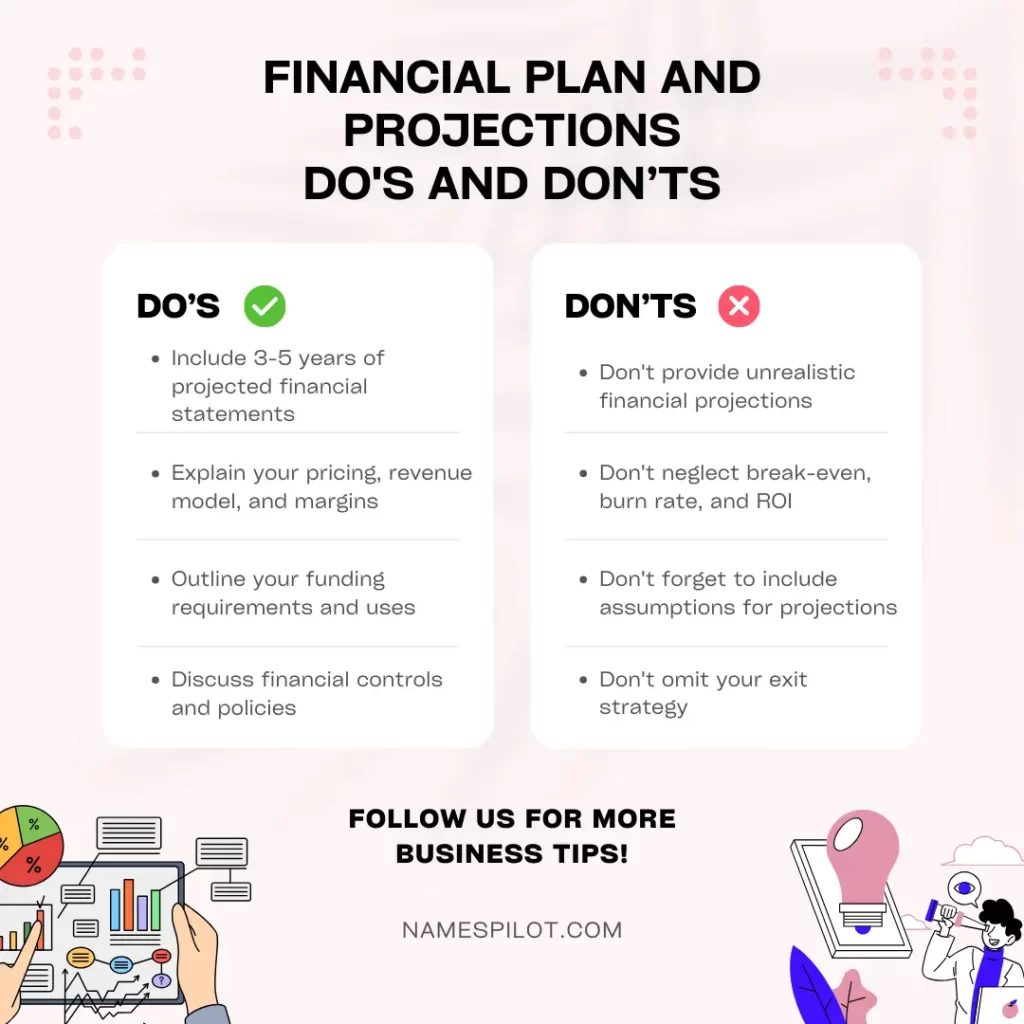
Share details on loans, investors, and other capital. Outline your pricing strategy and profit margins. Demonstrate the viability and profitability of your restaurant with this data.
“With good financial planning and effective cost control measures, a gourmet burger restaurant in a prime location can achieve profit margins of 15-20%,” according to Alex Yam, CPA and restaurant industry finance expert.
For example:
“Estimated startup costs, including renovations, equipment, and operating expenses come to $300,000.
We expect $1.2 million in sales in Year 1 based on an average spend of $12 per customer across approximately 3,300 daily customers. Food costs are estimated at 30% of revenue, labor at 25%, and other operating expenses at 20%
After costs, Burger Shack is projected to be profitable in Year 1 with EBITDA of $180,000.”
Appendix
Include supporting documents like:
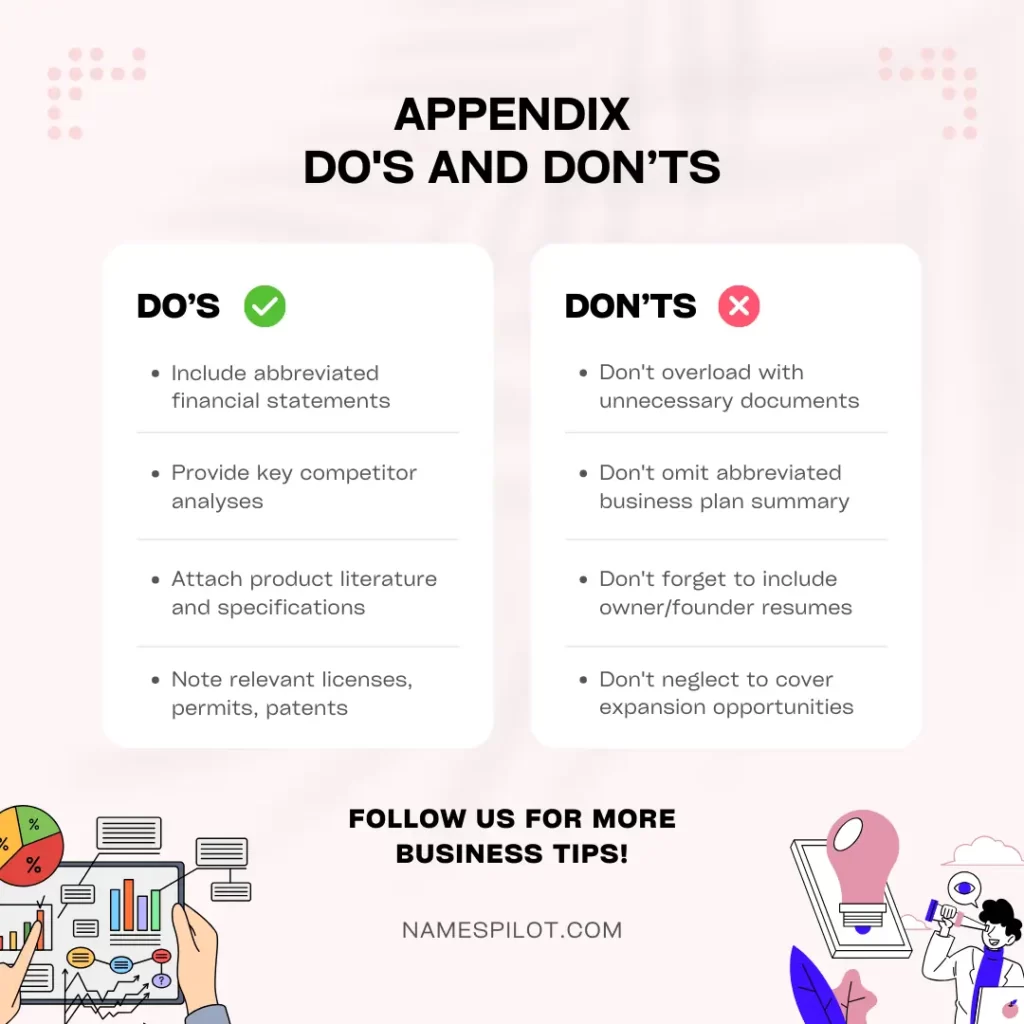
- licenses and permits
- owner resumes
- market research data
- menus
- financial statements
- lease agreements, etc.
Download the Fast Food Restaurant Business Plan PDF
For further guidance, download this free sample PDF fast food restaurant business plan template. It contains prompts and examples for each section.
Sample Fast Food Restaurant Business Plans
Reviewing examples can help provide direction for your restaurant business plan. Here are two sample plans for fictional fast food concepts:
Example 1: Burger Bistro
Burger Bistro is a gourmet burger restaurant serving specialty burgers, fries, and shakes.
The business plan outlines their upscale interior design, high-quality ingredients, and craft milkshake menu.
It analyzes competitors like Shake Shack and details a strong social media and community marketing strategy.
Financial projections show high-profit margins thanks to premium pricing.
Example 2: Pizza Planet
Pizza Planet focuses on quick, affordable pizza by the slice.
Their plan describes convenient grab-and-go locations near offices and colleges.
It highlights their speedy service system and mobile app for ordering ahead. The marketing plan targets students and busy young professionals.
Financials estimate low overhead costs and high sales volume will lead to strong profits.
Next Steps After Completing Your Fast Food Restaurant Business Plan
With a finished business plan in hand, it’s time to make your restaurant a reality. Next steps include:
- Seek business financing from banks, investors, or business loans/grants
- Find and secure an ideal restaurant location
- Apply for required licenses and permits
- Hire your management team and staff
- Develop your brand identity and marketing assets
- Source reputable food suppliers and equipment
- Order inventory and stock up before opening day
- Host a grand opening event to kick things off
A detailed business plan gives you the blueprint to confidently launch and grow a successful fast-food restaurant.
With thorough planning and execution, your dream of owning this type of business can become a prosperous reality.
Now get out there and serve up some tasty eats!
Related Posts:
- Small Restaurant Business Plan PDF
- Small Scale Poultry Business Plan PDF
- Clothing Brand Business Plan Sample
FAQs On Fast Food Restaurant Business Plan PDF
How Do I Start a Fast Food Business Plan?
To start a fast food business plan, research the market, choose a concept, analyze startup costs and financing, and create detailed financial projections and an operations plan.
Is It Profitable to Open a Fast Food Restaurant?
Opening a fast food restaurant can be profitable with careful planning, effective operations, quality food, and smart marketing to build customer loyalty.
What Are the Components of a Fast Food Business Plan?
The key components of a fast food business plan are the concept, market research, location analysis, competitive analysis, management team, operations, marketing, and financial projections.
How Much Money Do I Need to Start a Fast Food Franchise?
The initial investment to start a fast food franchise ranges from $500,000 to $2 million depending on the brand, location, size, equipment, inventory, and staffing requirements.
How Do I Run a Fast Food Restaurant Successfully?
To run a fast food restaurant successfully, focus on quality ingredients, efficient operations, good customer service, cleanliness, targeted marketing, and data-driven management to maximize sales and profitability.
What Makes Fast Food Profitable?
Fast food restaurants thrive by providing convenient, consistent, and affordable meals quickly to a loyal customer base through efficient operations and optimizing sales per customer.



















